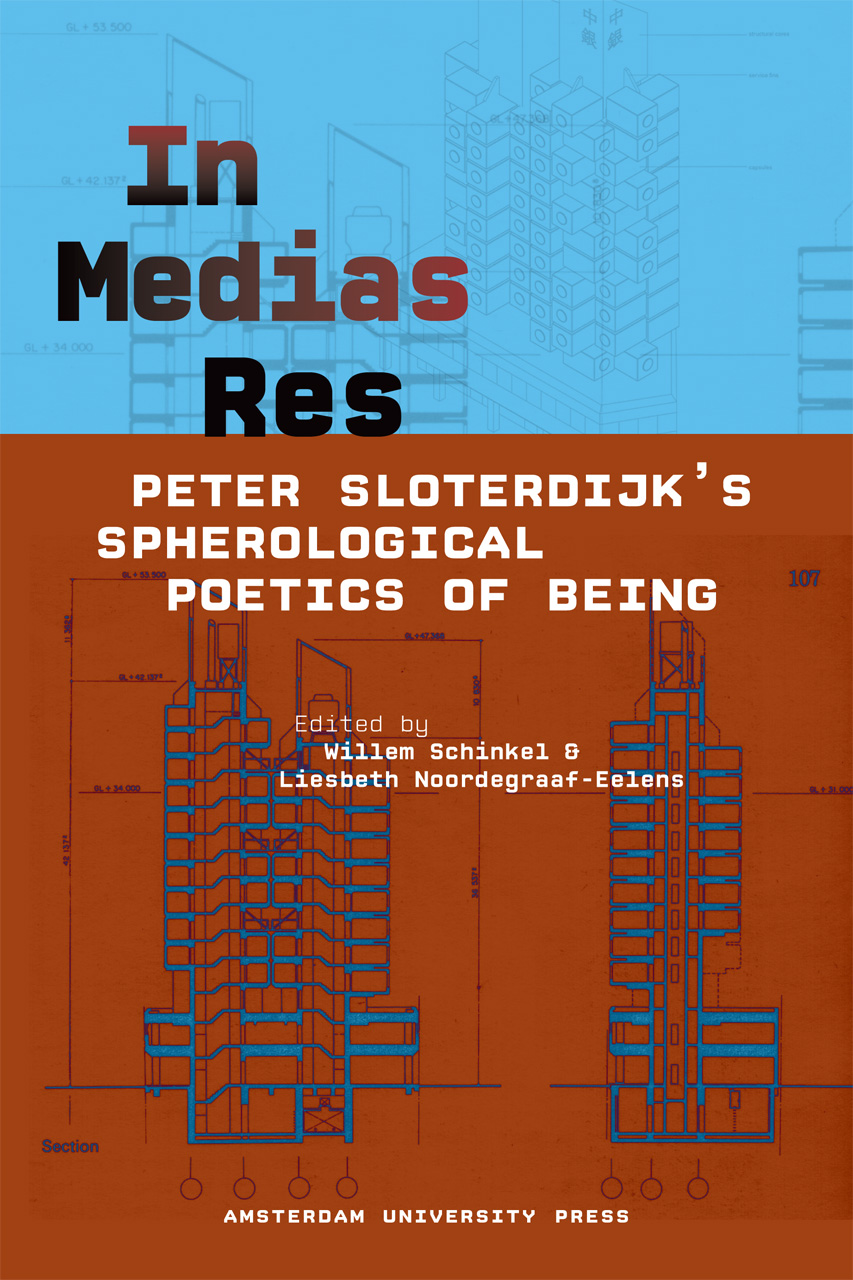Willem Schinkel, Liesbeth Noordegraaf-Eelens (eds.): In Medias Res: Peter Sloterdijk’s Spherological Poetics of Being (2011)
Filed under book | Tags: · aesthetics, attention, biopolitics, capitalism, critique, information society, mass media, philosophy, politics, posthumanism, religion, theory

“In recent years, Peter Sloterdijk has become one of Germany’s most influential thinkers. His diverse body of work includes a Heideggerian project to think “space and time,” a Diogenes-inspired affirmation of the body, and a Deleuzian ontology of network-spheres. This highly accessible collection of essays brings together a team of internationally renowned scholars, including Sjoerd van Tuinen, Rudi Laermans, Peter Weibel, and Bruno Latour, to provide a series of critical reflections on Sloterdijk’s oeuvre.”
Publisher Amsterdam University Press, Amsterdam, 2011
Creative Commons Licence BY-NC 3.0 License
ISBN 908964329X, 9789089643292
204 pages
Jonathan Crary: Suspensions of Perception: Attention, Spectacle, and Modern Culture (1999)
Filed under book | Tags: · 1880s, 1890s, 1900s, aesthetics, art history, attention, painting, perception, spectacle, subjectivity, visual culture

“Suspensions of Perception is a major historical study of human attention and its volatile role in modern Western culture. It argues that the ways in which we intently look at or listen to anything result from crucial changes in the nature of perception that can be traced back to the second half of the nineteenth century.
Focusing on the period from about 1880 to 1905, Jonathan Crary examines the connections between the modernization of subjectivity and the dramatic expansion and industrialization of visual/auditory culture. At the core of his project is the paradoxical nature of modern attention, which was both a fundamental condition of individual freedom, creativity, and experience and a central element in the efficient functioning of economic and disciplinary institutions as well as the emerging spaces of mass consumption and spectacle.
Crary approaches these issues through multiple analyses of single works by three key modernist painters—Manet, Seurat, and Cezanne—who each engaged in a singular confrontation with the disruptions, vacancies, and rifts within a perceptual field. Each in his own way discovered that sustained attentiveness, rather than fixing or securing the world, led to perceptual disintegration and loss of presence, and each used this discovery as the basis for a reinvention of representational practices.
Suspensions of Perception decisively relocates the problem of aesthetic contemplation within a broader collective encounter with the unstable nature of perception—in psychology, philosophy, neurology, early cinema, and photography. In doing so, it provides a historical framework for understanding the current social crisis of attention amid the accelerating metamorphoses of our contemporary technological culture.”
Publisher MIT Press, 1999
October Books series
ISBN 0262531992, 9780262531993
397 pages
Reviews: Juliet Koss (CAA Reviews, 2000), Jodi Brooks (Screening the Past, 2000), Steven Z. Levine (Bryn Mawr College, 2001), Kimberly Lamm (Cultural Critique, 2002).
PDF (updated on 2024-3-3)
Comment (0)Jonathan Beller: The Cinematic Mode of Production. Attention Economy and the Society of the Spectacle (2006)
Filed under book | Tags: · attention, attention economy, capitalism, cinema, film, film theory, labour, marxism, spectacle

“Cinema brings the industrial revolution to the eye,” writes Jonathan Beller, “and engages spectators in increasingly dematerialized processes of social production.” In his groundbreaking critical study, cinema is the paradigmatic example of how the act of looking has been construed by capital as “productive labor.” Through an examination of cinema over the course of the twentieth century, Beller establishes on both theoretical and historical grounds the process of the emergent capitalization of perception. This process, he says, underpins the current global economy.
By exploring a set of films made since the late 1920s, Beller argues that, through cinema, capital first posits and then presupposes looking as a value-productive activity. He argues that cinema, as the first crystallization of a new order of media, is itself an abstraction of assembly-line processes, and that the contemporary image is a politico-economic interface between the body and capitalized social machinery. Where factory workers first performed sequenced physical operations on moving objects in order to produce a commodity, in the cinema, spectators perform sequenced visual operations on moving montage fragments to produce an image.
Beller develops his argument by highlighting various innovations and film texts of the past century. These innovations include concepts and practices from the revolutionary Soviet cinema, behaviorism, Taylorism, psychoanalysis, and contemporary Hollywood film. He thus develops an analysis of what amounts to the global industrialization of perception that today informs not only the specific social functions of new media, but also sustains a violent and hierarchical global society.
Publisher University Press of New England, 2006
ISBN 1584655836, 9781584655831
332 pages
review (Robert Moses Peaslee, Journal of Communication Inquiry)
PDF (no OCR; some pages missing; updated on 2012-11-4)
Download a 2003 paper (published in Culture, Theory & Critique 44(1), 2003, pp 91-106; added on 2012-10-20)

